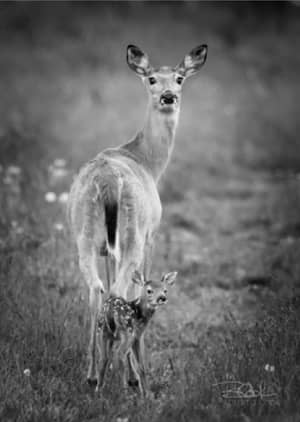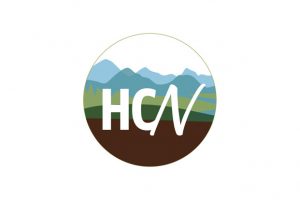The signs of spring are all around us. Warmer temperatures are here and the Bragg Creek area is getting busier as summer approaches.

Warmer temperatures also stimulate local deer migration from winter foraging areas to summer habitats, and it’s the time when does give birth.
Sadly, fawning season, from late May through June, is the second highest period for wildlife-vehicle collisions in Alberta. Did you know that up to 90%+ of reported wildlife collisions in Alberta can involve ungulates – mostly deer? *
Every doe with a fawn is likely stressed, hungry, and possibly, exhausted. She, just like any human mother, needs calm, quiet and a sense of security to ensure her own health, and the health of her fawn.
Roads often divide animal habitats and impede natural animal movement, and this area is no different. At this time of year, when the doe and fawn population is especially vulnerable, we should take extra care on our roads – for our own safety, the safety of our four-legged friends, and so that we can protect the integrity of our ecosystems.
Our vision at Bragg Creek Wild – for a safe and sustainable environment where wildlife and humans co-exist – depends on each of us being well informed and acting responsibly.
Wildlife-vehicle collisions are a serious problem, resulting in many millions of dollars in damage and insurance claims every year, causing serious injuries and fatalities to drivers and passengers, and harming precious wildlife.
There’s no better time to review recommendations for avoiding deer collisions, so here are some key points to keep in mind**:
- Always observe the posted speed limit and remain alert, with eyes on the ditches
- Pay attention for posted signage: these indicate known frequent deer crossings
- Be especially vigilant at dawn and dusk when deer are most active
- Deer can jump over 3 meters! Don’t expect fencing to prevent them from crossing
- Deer are herd animals, if you see one animal, reduce speed, then stop until it has safely crossed the road – then scan for the rest of the herd, especially fawns
- Don’t depend on deer whistles: they are not 100% effective
- In low light; dawn, dusk and at night- deer may ‘freeze’ when overstimulated by headlights, so flash your lights on and off to help the deer recover
- NEVER HONK your horn, we now understand that horns can seriously confuse the animal, causing them to run directly into your vehicle or oncoming vehicles
- Be prepared for unpredictable behaviour, don’t expect the deer to cross quickly, or in a straight line
- Don’t swerve out of your lane to avoid deer: use your brakes to reduce speed, and then stop. You risk collision with another vehicle if you leave your lane
Please report all wildlife-vehicle collisions – there are some useful contacts listed below. If the animal is injured, it may cause danger to other motorists and you may be required by your insurance company to report if your vehicle is damaged.
Talk to family, friends and neighbours about fawning season and safe driving in wildlife zones.
Wildlife health is important to our culture, economy, tourism, agriculture, and health. A healthy ecosystem is vital to our own health and well-being, we are intrinsically connected. When ecosystems are out of balance or at risk, human health is also at risk. So let’s be safe out there on the roads and do our part to preserve what’s wild and wonderful. Protect beautiful Bragg Creek Wild Country.
To report a wildlife-vehicle collision, contact RCMP Cochrane 403.851.8000
To report an injured animal, contact Alberta Institute for Wildlife Conservation (403) 946-2361
To pick up a dead animal, contact Rockyview County (403) 230-1401
Sources:
*https://www.rockies.ca/files/reports/Alberta_ Improving_Human_and_Wildlife_Safety_ April2019.pdf
**https://wildliferoadsharing.tirf.ca/road- safety-and-wildlife/myths-and-misconceptions

























